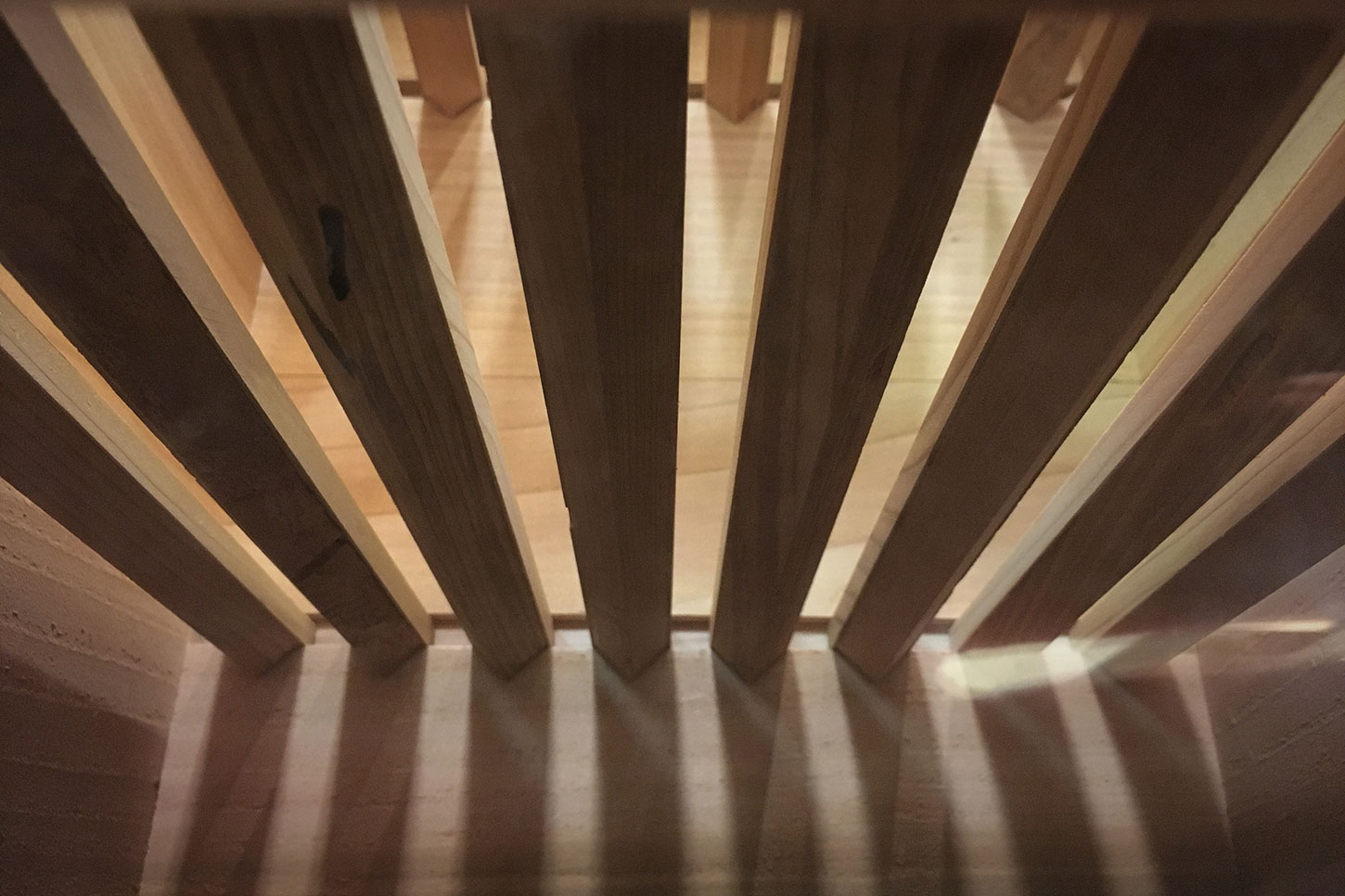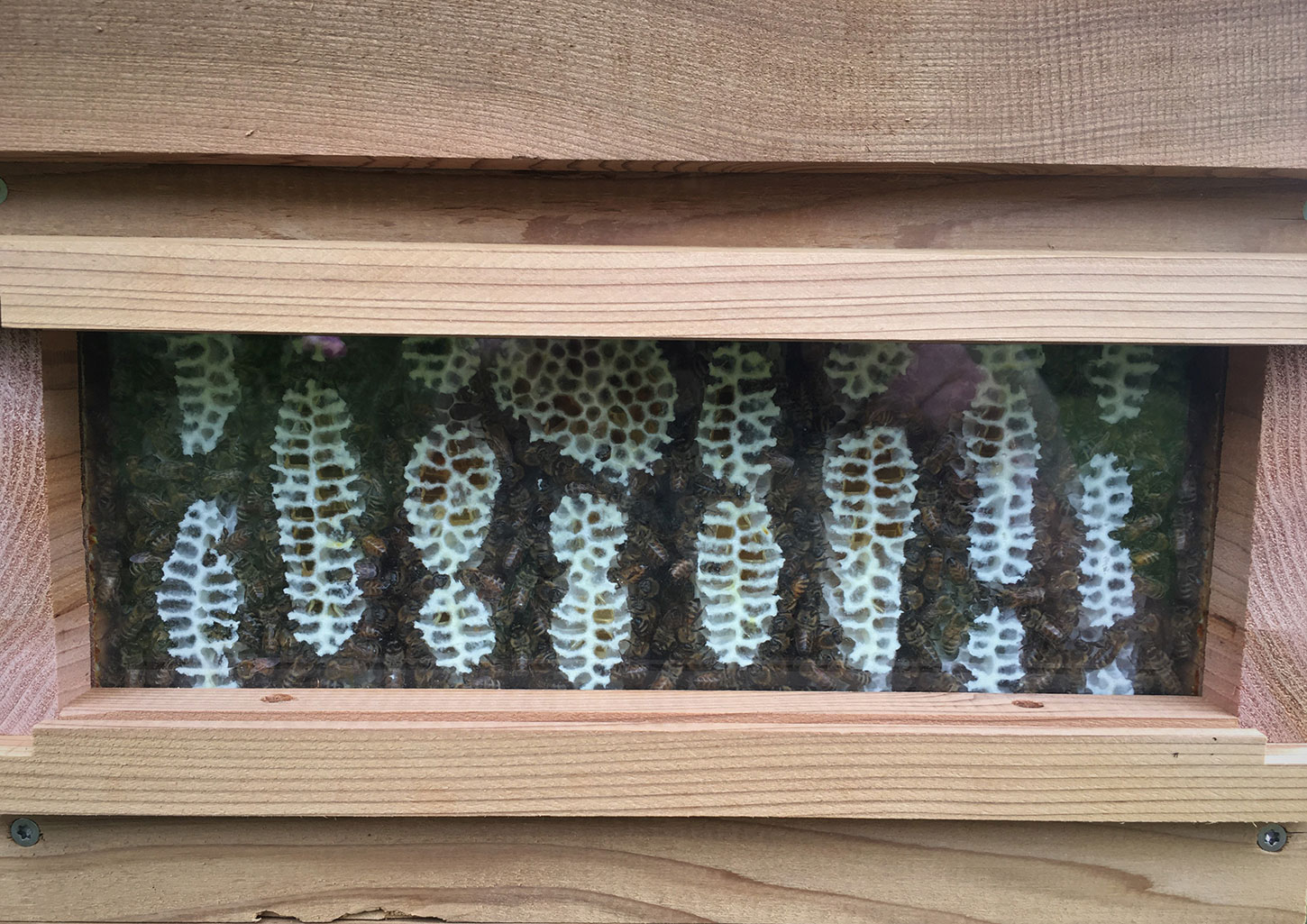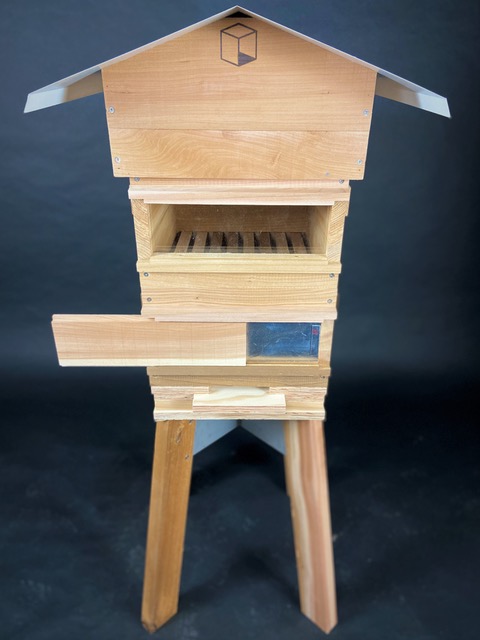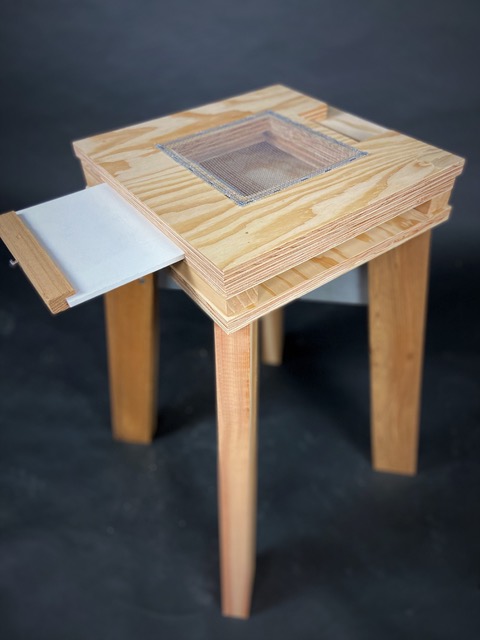WHY WARRé HIVES
Warré designed The People’s Hive to more closely mimic an interior environment preferred by Apis mellifera and to allow ease of management by the beekeeper.
Why Warré Hives?

In beekeeping, Warré is both a hive design and an approach, and in Beekeeping For All, Abbé Warré proposed that his hive design is better for the bees and their keepers. According to Warré, the bees benefit from: the square cross-section of the hive, nadiring to facilitate bees natural tendency to build comb from the top of the hive down, foundationless comb built on top bars, minimizing inspection and disruption of the colony, and a quilt box to reduce heat loss and limit condensation within the hive; and, the beekeepers benefit from having a smaller hive body to lift and handle, less time spent inspecting and intervening in the hive, a simple design that can be made with commonly available materials, and more honey to harvest because the bees need less resources to feed and warm the colony through the winter dearth.

ROUGH INTERIOR
The interior of the hive is intentionally left rough. Bees tend to smooth rough interior surfaces with propolis and create an envelope around the colony. This propolis coating allows bees to more easily manage moisture within the hive and it is an antibacterial, antifungal, and antimicrobial material that is the basis of the colony immune system. In short, hives with lots of propolis are better able to control moisture and fight off pathogens.
INSULATION
Western red cedar is a low density softwood and is a better insulator than other commonly available woods, and at ⅞” thick it provides more of a buffer against temperature extremes than thinner materials. The rigid window insulation minimizes light leaking in around edges of the sliding window cover, in addition to thermal insulation.
LARGE ROOF OVERHANG
The roof overhangs the sides of the hive by approximately 3-½” and limits rain from hitting the exterior of the hive, and creates some shade on summer days.

EASING VIEWING OF BEE ACTIVITY
I’ve spent many many hours just watching bees come and go at the hive entrance. It’s always entertaining, and can be very informative about the health of the colony and what is likely going on inside the hive. The windows allow an additional level of survey because you can directly see a portion of their activity. Things you can quickly assess through the window that you cannot determine otherwise without opening the hive: Is the colony building comb and if so how rapidly? Are they storing nectar and turning it into capped honey? How’s the population looking and are they doing what you would expect for that time of year? Also, through feeling the heat generated by the colony through the glass it is possible to determine if and in what section of the hive there is active brood rearing. It’s also important recognize that uncovering the window and suddenly letting light into the hive will disrupt the colony to some extent, and to minimize that disruption only open the cover for no more than a minute or two at a time, never tap on the glass, and avoid opening the window when the sun will shine directly into the hive.
INSPECTION BOARD
Some beekeepers swear by screened bottom boards and some swear against them, and this design finds a middle ground and provides benefits of both systems. The hive base is not a typical screened bottom board because there is a removable inspection board below the opening. The screened opening allows varroa mites in particular, and detritus in general, to fall through onto the inspection board. If checked in regular intervals, viewing the inspection board is a quick and easy way to get a relative sense of varroa mite population within the hive. I also look for accidentally dropped wax scales as a sign the bees are producing wax for comb building, bits of honey caps during winter feeding, and legs and other bee body parts when yellow jackets or other predators are active. The inspection board also seals the screened opening from the outside to prevent drafts.

